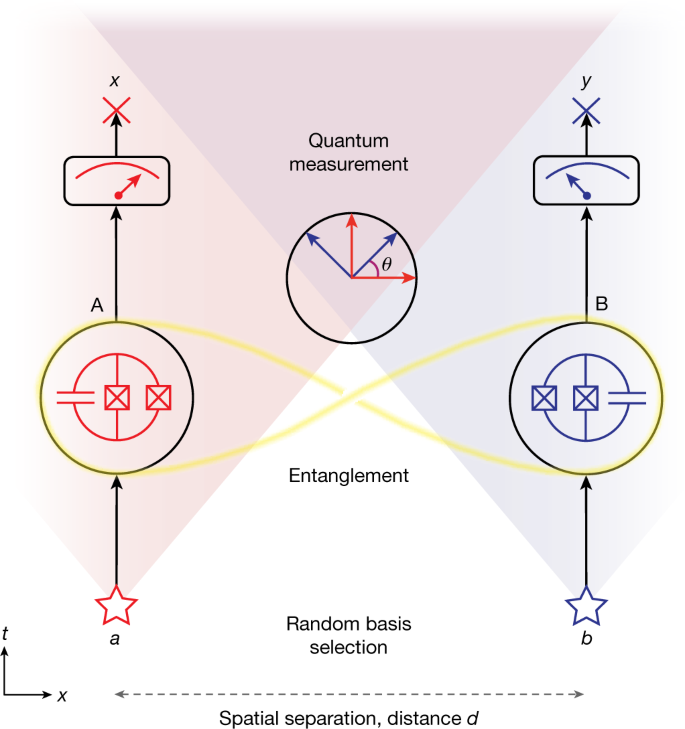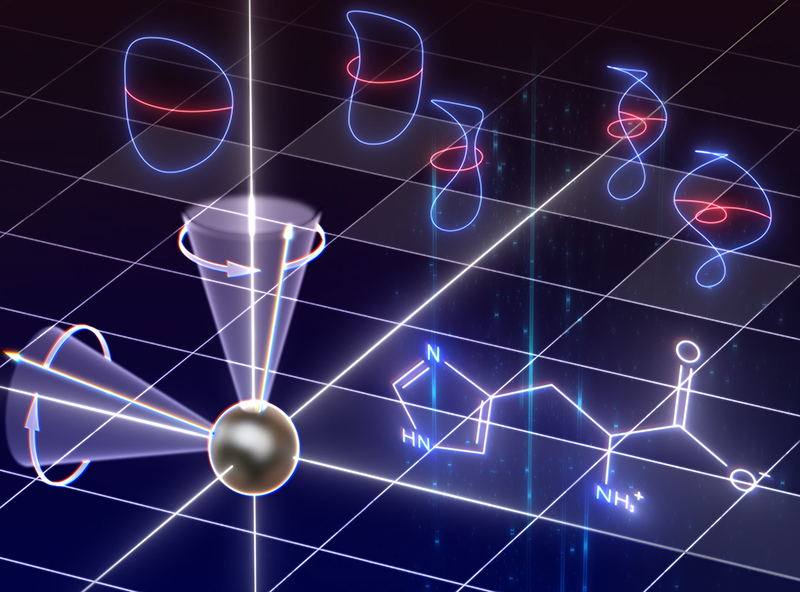2023-05-10 スイス連邦工科大学チューリッヒ校(ETHZurich)
◆この実験では、絶対零度を超える温度まで冷却した長さ30メートルのチューブを用いて、離れた場所にある量子的な物体が、従来のシステムで可能なよりもはるかに強く相関することを実証しました。
◆研究者たちは、この実験で初めて超伝導回路を使用しました。この回路は、強力な量子コンピュータを構築するための有望な候補となります。
<関連情報>
- https://ethz.ch/en/news-and-events/eth-news/news/2023/05/entangled-quantum-circuits.html
- https://www.nature.com/articles/s41586-023-05885-0
超伝導回路による抜け穴のないベル不等式回避を実現。 Loophole-free Bell inequality violation with superconducting circuits
Simon Storz,Josua Schär,Anatoly Kulikov,Paul Magnard,Philipp Kurpiers,Janis Lütolf,Theo Walter,Adrian Copetudo,Kevin Reuer,Abdulkadir Akin,Jean-Claude Besse,Mihai Gabureac,Graham J. Norris,Andrés Rosario,Ferran Martin,José Martinez,Waldimar Amaya,Morgan W. Mitchell,Carlos Abellan,Jean-Daniel Bancal,Nicolas Sangouard,Baptiste Royer,Alexandre Blais & Andreas Wallraff
Nature Published:10 May 2023
DOI:https://doi.org/10.1038/s41586-023-05885-0

Abstract
Superposition, entanglement and non-locality constitute fundamental features of quantum physics. The fact that quantum physics does not follow the principle of local causality1,2,3 can be experimentally demonstrated in Bell tests4 performed on pairs of spatially separated, entangled quantum systems. Although Bell tests, which are widely regarded as a litmus test of quantum physics, have been explored using a broad range of quantum systems over the past 50 years, only relatively recently have experiments free of so-called loopholes5 succeeded. Such experiments have been performed with spins in nitrogen–vacancy centres6, optical photons7,8,9 and neutral atoms10. Here we demonstrate a loophole-free violation of Bell’s inequality with superconducting circuits, which are a prime contender for realizing quantum computing technology11. To evaluate a Clauser–Horne–Shimony–Holt-type Bell inequality4, we deterministically entangle a pair of qubits12 and perform fast and high-fidelity measurements13 along randomly chosen bases on the qubits connected through a cryogenic link14 spanning a distance of 30 metres. Evaluating more than 1 million experimental trials, we find an average S value of 2.0747 ± 0.0033, violating Bell’s inequality with a P value smaller than 10−108. Our work demonstrates that non-locality is a viable new resource in quantum information technology realized with superconducting circuits with potential applications in quantum communication, quantum computing and fundamental physics15.



